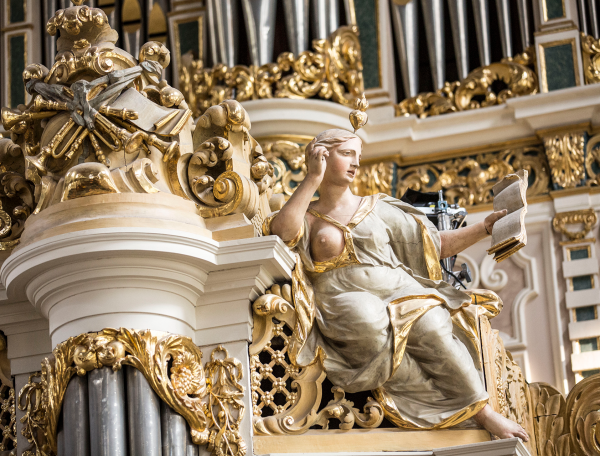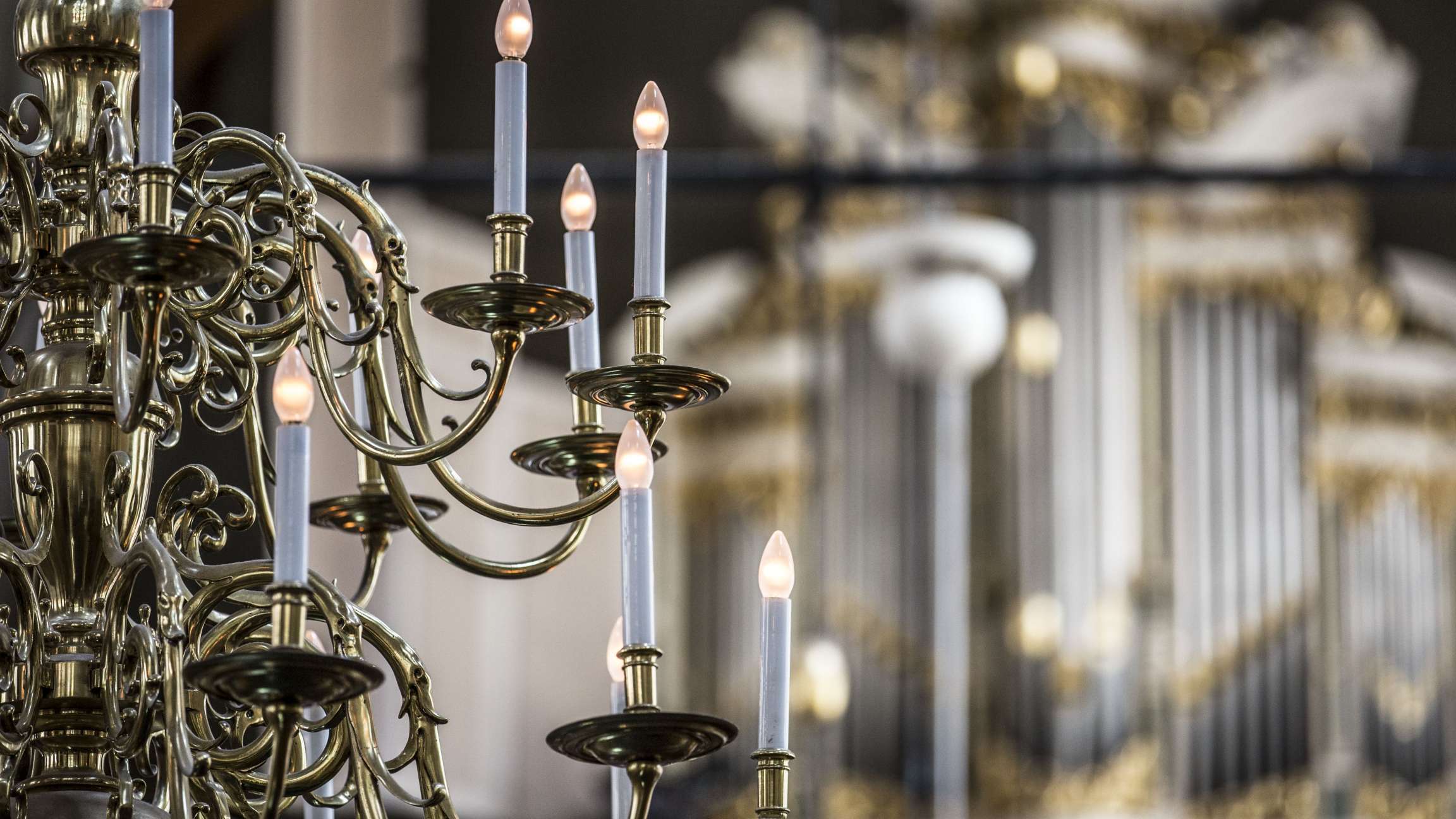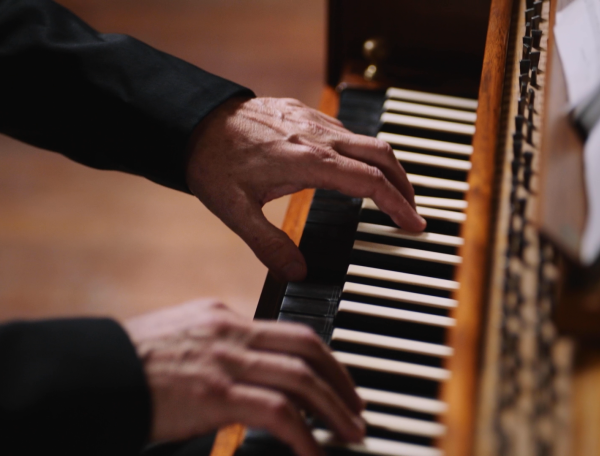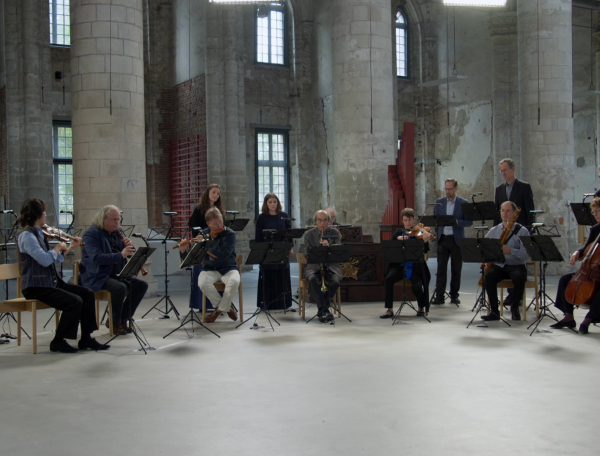

Canonische Veränderungen über: Vom Himmel hoch
BWV 769a performed by Bernard Winsemius
Walloon Church, Amsterdam
Behind the music
A strong sample sheet (for Christmas)
Variations on a simple Christmas song are the little brother of 'The Art of Fugue' and the 'Musical Offering'
In Bach’s most virtuoso music, the ingenious interplay of themes and counter-themes are often difficult to unravel in the mass of sound. This is not the case, however, in Canonische Veränderungen, as everyone can immediately spot the snatches of the Christmas chorale Von Himmel hoch. As this melody is a stable factor, the ingenuity lies rather in the canon voices.
The principle is simple. One voice begins, and a second voice answers a few beats later. This may be on the same notes (like singing Frère Jacques at school) or a couple of notes higher or lower, often with surprising harmonies. You can also turn the answer around: a step up in the melody and a step down in the answer, and vice versa. And finally, you can slow down or speed up the answer. Bach uses practically all these variations (and even quite systematically), which is probably to do with the origins of Veränderungen. In 1747, he joined the Societät der musikalischen Wissenschaften, founded in 1738 by Lorenz Mizler. Being a theoretical society, there was no better proof of one’s craftsmanship than to present an array of ingenious techniques.
The variations gradually become more inventive. Variation 1: canon by the soprano and the bass, with the chorale as a (pedal) tenor between the two. This is followed by Variation 2: canon by the soprano and the alto ‘alla quinta’ (i.e. with a fifth interval), and the melody in the bass. Then we go from three-voice to four-voice canons. Variation 3: question and answer game between the tenor and bass, with a cantabile melody in the alto and the chorale in the soprano. And Variation 4: the bass answers the soprano at half tempo. In the final bars of this variation, we hear Bach’s signature: the notes B-flat-A-C-B (which spell B-A-C-H in German). In Variation 5, the heart of the series, Bach creates a variation on the chorale melody itself. Different pairs of voices keep answering one another in canon in reverse, at different intervals. In an explosion of voices, the ending repeats all the chorale phrases at once. Although very ingenious, the music is easy on the ear at the same time!
In the copper engraving that Bach had made when he joined Mizler’s society, he kept to the order described above. He had just one of the voices notated in full, giving only indications for the canon voices. There is also an autograph written by Bach himself, in which all the voices are written out in full. Here, the variations are given in a different order (the order played in the recording), and the culmination of Variation 5 comes in third place. So here, he opted for symmetry – two three-voice canons and two four-voice canons on either side of the variations on the chorale melody itself – rather than building up to a climax.
- BWV
- 769a
- Title
- Einige canonische Veränderungen über das Weynacht-Lied, Vom Himmel hoch da komm ich her
- Instrument
- organ
- Genre
- organ works
- Year
- 1747 for the copper engraving, manuscript undated
- City
- Leipzig
- Special notes
- BWV 769 is a copper engraving made for the occasion of Bach joining Mizlers society. The canon voices are not written out, so it was necessary to do some homework before performing the work. BWV 769a is the autograph, and the variations are in a different order.
Extra videos
Vocal texts
Original
Translation
Credits
-
- Release date
- 26 December 2014
-
- Recording date
- 25 June 2014
-
- Location
- Walloon Church, Amsterdam
-
- Organist
- Bernard Winsemius
-
- Organ
- Christian Müller, 1734
-
- Producer
- Frank van der Weij
-
- Film director
- Jan Van den Bossche
-
- Directors of photography
- Sal Kroonenberg, Ruben van den Broeke
-
- Grip
- Antoine Petiet
-
- Music production, edit and mix
- Holger Schlegel
-
- Film editor
- Dylan Glyn Jones
-
- Colorist
- Jef Grosfeld
-
- Production assistants
- Marco Meijdam, Zoë de Wilde
Discover
Help us to complete All of Bach
There are still many recordings to be made before the whole of Bach’s oeuvre is online. And we can’t complete the task without the financial support of our patrons. Please help us to complete the musical heritage of Bach, by supporting us with a donation!

